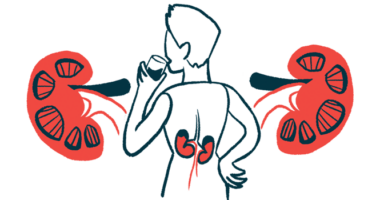Kidney Impairment Likely Where Rheumatoid Arthritis, AAV Coexist

People with rheumatoid arthritis (RA) who also have ANCA-associated vasculitis (AAV) are more likely to develop signs of kidney impairment than those without AAV, a small study showed.
Among patients with both disorders, AAV was usually diagnosed after RA, and often was asymptomatic, highlighting that an early RA diagnosis may sometimes mask AAV and delay treatment.
“AAV can coexist with RA,” the research team wrote, adding that study findings highlight a need to “remain vigilant to superimposed AAV on RA.”
The study, “Anti-neutrophil cytoplasmic antibody associated vasculitis in patients with rheumatoid arthritis,” was published in BMC Nephrology.
AAV refers to a group of autoimmune diseases marked by misdirected immune attacks on small blood vessels throughout the body, leading to systemic organ damage. The kidneys are particularly susceptible to this type of damage and kidney involvement is associated with a poor prognosis.
RA is another autoimmune condition wherein inflammation is usually limited to the joints. Several reports have shown that AAV and RA can coexist, however, it’s unclear if the clinical features of AAV with RA are different from those of AAV or RA alone.
A team of researchers in China examined the clinical profile of 47 patients who were diagnosed with both AAV and RA. Among them, 15 were seen at the researchers’ clinic in the Peking Union Medical College Hospital and 32 cases were identified from previously published studies.
Together, 70.2% of the patients were female, and the mean age at diagnosis was 51. Regarding AAV type, 37 were diagnosed with microscopic polyangiitis (MPA), and 10 with granulomatosis with polyangiitis (GPA). In most patients (83%), AAV was diagnosed after RA.
Other than the joints, which are usually affected by RA, the kidneys were the most frequently affected organ. This was evidenced by symptoms like hematuria (bloody urine), proteinuria (proteins in the urine), and renal insufficiency (kidney failure). The lungs and skin were the second and third most frequently affected organs.
In 95.7% of patients, glucocorticoids either with or without immunosuppressants, like cyclophosphamide, were prescribed to treat AAV. Over a median follow-up of one year, 30 patients saw improvements in renal function, 11 developed end-stage kidney disease, and four died.
The team then more closely examined the clinical characteristics of the 15 patients who they saw at their clinic, all of whom had MPA. In a comparison of these patients with 60 people with MPA only, those with RA were more likely to have been asymptomatic and less likely to have a fever at the time of diagnosis than the MPA-only group.
Other clinical features, including weight loss, lung involvement, signs of kidney disease, and improvements in kidney function, did not differ between the two groups after six months.
Nine of the 15 MPA-RA patients had AAV-associated glomerulonephritis, which is marked by inflammation and damage to the glomeruli, or the filtering units of the kidneys.
Kidney biopsies from them were compared with biopsies from 23 RA patients who did not have AAV, but did have glomerulonephritis with no identified cause.
Results showed that patients with RA-AAV tended to show signs of worse kidney function compared with those with glomerulonephritis without AAV.
Specifically, patients with AAV-glomerulonephritis tended to have lower estimated glomerular filtration rates and hemoglobin levels, as well as elevated serum albumin levels, all of which indicate a greater degree of kidney impairment.
“In conclusion, AAV may not be as rare as we thought in patients with RA,” the researchers wrote, noting that a small sample size may limit their findings.
The fact that RA was usually diagnosed before AAV, coupled with the observation that patients with both conditions were more likely to be asymptomatic at the time of AAV diagnosis, highlights the possibility that RA treatments may alter AAV manifestations in some patients. Researchers noted that “this deviation may hamper or delay our recognition of AAV in RA patients and finally result in a poor outcome.”
Since RA patients with coexisting AAV also showed a greater likelihood of kidney impairment, which is associated with a poorer prognosis, the researchers suggested “routine assessment to determine the presence of AAV in RA patients with renal involvement, especially in those with renal dysfunction.”







